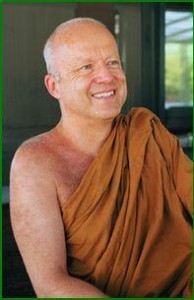
A Burden Off the Mind – A Study Guide on the Five Aggregates – Buddha’s awakening gave him a new perspective on the limitations of words. He had discovered a reality—the Deathless—that no words could describe. At the same time, he discovered that the path to Awakening could be described, although it involved a new way of seeing and conceptualizing the problem of suffering and stress. Because ordinary concepts were often poor tools for teaching the path, he had to invent new concepts and to stretch pre-existing words to encompass those concepts so that others could taste Awakening themselves. One of the new concepts most central to his teaching was that of the khandhas, usually translated into English as “aggregates.” Throughout the remainder of his teaching career, he referred to khandhas time and again. How should a meditator make use of the concept of the khandhas?
Download A Burden Off the Mind A Study Guide on the Five Aggregates by Thanissaro Bhikkhu here:
Thanissaro Bhikku – A Burden off the mind
What are Kandhas in Buddhism?
In Buddhism, “khandhas” (often spelled as “skandhas” in Sanskrit) refer to the five aggregates that constitute human existence. These aggregates are considered to be the components that come together to form an individual, but none of them are seen as a permanent self or soul. The concept of khandhas is fundamental in Buddhist teachings, especially in relation to the doctrine of Anatta (non-self). The five khandhas are:
- Rūpa (Form or Matter): This refers to the physical aspect of existence, including the body and any material objects.
- Vedanā (Sensation or Feeling): This encompasses all types of feelings experienced through the senses, whether they are pleasant, unpleasant, or neutral.
- Saññā (Perception): This is the mental process of recognizing and labeling experiences, like identifying sights, sounds, smells, tastes, and tactile sensations.
- Saṅkhāra (Mental Formations or Fabrications): This aggregate includes various mental habits, thoughts, ideas, opinions, prejudices, and volitions. It’s often seen as a broad category that encompasses all types of mental conditioning.
- Viññāṇa (Consciousness): This refers to the aspect of awareness that perceives and experiences the other aggregates. It’s the consciousness of seeing, hearing, smelling, tasting, touching, and thinking.
Together, these five aggregates interact and interdepend to create the experience of a living being. In Buddhist thought, understanding the nature of the khandhas and their impermanent, non-self nature is key to understanding the human condition and the path towards enlightenment and liberation from suffering.


I feel sastefiid after reading that one.